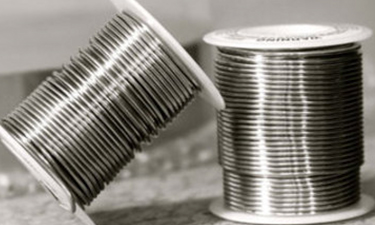
Solders are fusible metal alloys used to join metal workpieces together. Solder has a melting point below that of the workpieces being joined. Thermal conductivity of common solders range from 32 – 94 W/(m-K) and posses the density of 9.25 – 15.00 g/cm3.
Solders are fusible metal alloys used to join metal workpieces together. Solder has a melting point below that of the workpieces being joined. Thermal conductivity of common solders range from 32 – 94 W/(m-K) and posses the density of 9.25 – 15.00 g/cm3.
Two types of solder are commonly used – soft solders and hard solders.
Soft solders, also known as tin/lead solders, are commonly used in electrical and some plumbing applications. In solder solders, the greater the tin concentration, the greater the solder’s tensile and shear strength. Solder paste is typically used in circuit board applications where components are held together with soldered joints.
Hard solders are used for brazing and tend to melt at higher temperatures. Alloys of copper with zinc or silver are most commonly used. Silver solder is also used in manufacturing to join metal parts that cannot be welded. These type of alloys contain a high amount of silver with traces of cadmium.
Solder Preforms are pre-made shapes specially designed for an application. Many methods are used to manufacture solder preforms with stamping being the most prevalent. Preforms may include the solder flux needed for the soldering process – this may be an internal flux, inside the solder preform, or external, with the solder preform coated.
